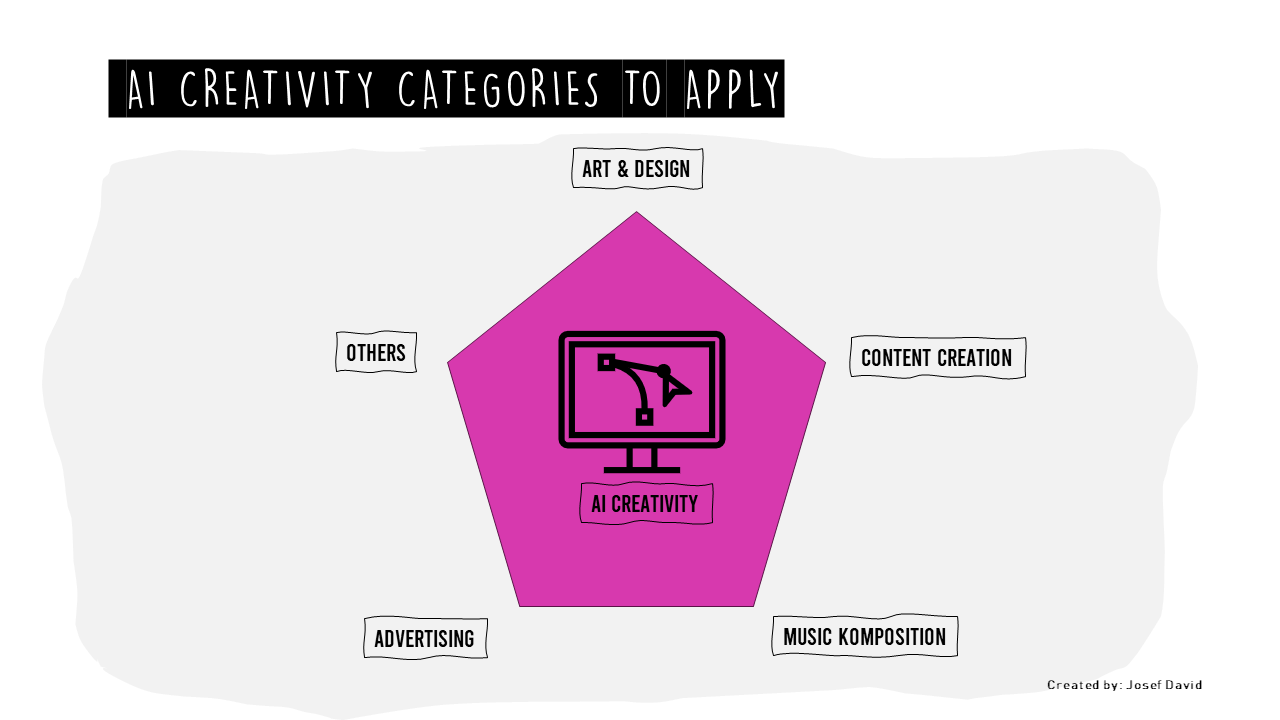AI-Creativity Applied
Artificial Intelligence (AI) has been making waves in various sectors, and one area where its impact is significantly felt is in the realm of creativity. AI-Creativity is the application of artificial intelligence to generate or enhance creative processes and outputs. It’s a fascinating blend of technology and artistry, where machines are programmed to mimic human creativity, often with remarkable results.
Best Categories to use AI Creativity
1. Art and Design: AI can generate unique pieces of art or design elements, using algorithms that learn from existing works and create something new and original. This can be particularly useful for graphic designers, artists, or anyone in the creative industry looking for fresh inspiration.
2. Content Creation: AI can also be used to create written content. For instance, AI-powered tools like OpenAI’s GPT-3 can generate human-like text, making it a valuable tool for content creators, copywriters, and marketers.
3. Music Composition: AI can analyse patterns in music and create new compositions based on these patterns. This has potential applications in the music industry, from creating background scores for films to generating melodies for songs.
4. Advertising: In the advertising industry, AI can be used to create personalised ad campaigns based on user data. This allows businesses to target their audience more effectively and increase engagement.
Best Strategies to use AI Creativity
1. Collaborative Approach: Rather than viewing AI as a replacement for human creativity, consider it as a tool that can enhance your creative process. Use it as a collaborator that provides you with fresh ideas and perspectives.
2. Experimentation: Don’t be afraid to experiment with different AI tools and technologies. Each tool has its strengths and weaknesses, so try out different ones to see which works best for your needs.
3. Training: Spend time training your AI tool on high-quality data relevant to your field. The more it learns from good data, the better its output will be.
4. Integration: Integrate AI into your existing workflow. This will allow you to leverage its capabilities while still maintaining control over the creative process.
Call-to-Action Step-by-Step
1. Research: Start by researching different AI tools available in the market. Look for ones that are relevant to your field and have good reviews.
2. Trial: Most AI tools offer a free trial or demo. Use this opportunity to test out the tool and see if it meets your needs.
3. Purchase: If you’re satisfied with the tool, go ahead and purchase it. Remember, it’s an investment in your creative process.
4. Training: Spend time training the tool on your data. This might involve feeding it examples of your work, or data relevant to your field.
5. Experimentation: Once the tool is trained, start experimenting with it. Use it to generate ideas, create content, or whatever else you need.
6. Evaluation: Regularly evaluate the tool’s performance and make adjustments as necessary. Remember, AI is a tool that learns and improves over time.
Conclusion
In conclusion, AI-Creativity is a powerful tool that can enhance our creative processes in numerous ways. From art and design to content creation and advertising, there are many categories where AI can be applied effectively. The key is to approach it as a collaborator rather than a replacement for human creativity, and to experiment with different tools and strategies until you find what works best for you. So why not take the first step today? Start exploring the world of AI-Creativity and see how it can transform your creative process.
